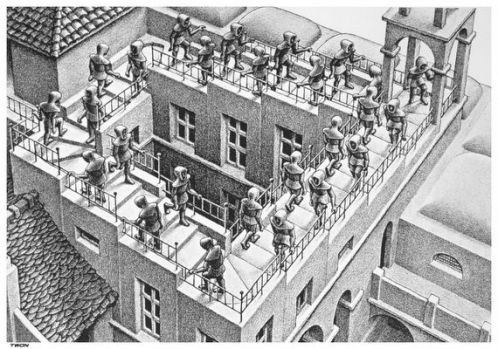September 29, 2010
The Politics of Debt
The Centre for Cultural Studies Research
School of Humanities and Social Sciences
University of East London
presents:
The Politics of Debt: a Seminar
October 13th 2010, 2:00pm-500pm
Concepts and experiences of debt have become central to the management of contemporary capitalism, to understandings of its consequences and to social experience at every scale. National debt, personal debt, ecological debt are key issues for understanding contemporary culture and politics. But what exactly is debt? Can we manage without it? Are current levels of personal, national, corporate and ecological debt sustainable; and what are the origins of this most fundamental concept?
speakers:
Aditya Chakrabortty, The Guardian, New Political Economy Network
Joe Cox, Campaigns Organiser at Compass, organiser of the Compass campaign against legal loan sharking
Massimo De Angelis, UEL, author of The Beginning of History: Value Struggles and Global Capital, Keynesianism, Social Conflict and Political Economy.
David Graeber, Goldsmiths College, author of Possibilities: Essays on Hierarchy, Rebellion and Desire and Direct Action: an Ethnography, currently working on a history of debt.
UEL Docklands Campus
Cyprus DLR station - the station is literally at the campus
Room EB.G.16 (Ground Floor, East Building - East Building is to the left on entering the main square from Cyprus station)
All welcome, no need to book in advance
Further info contact Jeremy Gilbert: j.gilbert@uel.ac.uk
September 20, 2010
Capitalist realism and Compass
I'm speaking to the Compass North and East London group about capitalist realism a week tomorrow ... it won't just be a retread of the book; I'll also be talking about the implications and opportunities of some of the issues raised in CR for mainstream politics ...
Time: Tuesday September 28th 8:00 pm
Place: The function room of The Islington Tap, 80 Liverpool Road, London, N1 0QD
Free, no booking required
Accelerationism Podcasts
Thanks to all the speakers at the Accelerationism event last week, and thanks, too, for all the excellent questions from the floor. I felt much clearer about what accelerationism is and how it might function as an anti-capitalist strategy after the event, even though it quickly became clear that the many issues which the event was addressing could not be dealt with in such a short space of time ... but I'm hoping that this is only the beginning.
I would like to promise that I will post up my reflections on Accelerationism soon, but given all my work commitments and the (biological) bug I've got at the moment, that might be rash.
Go to Speculative Heresy for a comprehensive set of links; and I'm pleased to say that the podcasts of all the talks are now available at the excellent Backdoor Broadcasting Company.
A heads up: Reza Negarestani, one of the key contributors to the accelerationism debate, will be at Goldsmiths for an event entitled Decay Culture on January 15th - more details to follow soon.
A proliferation of virtual catatonic bodies, or why Inception is not Escheresque
(This originally appeared in Dublin's Visual Artsts' News Sheet)

On the surface, Christopher Nolan’s Inception seems to be a very Escheresque film. At one point, one of the characters, Arthur, instructs another by using the example of “the Penrose stairs” which have the same impossible structure as Escher’s famous "Ascending and Descending".
Inception has many merits, but ultimately it isn’t actually very Escheresque. In his Gödel, Escher, Bach, Douglas Hofstadter argues that the defining characteristic of most of Escher’s signature images is the “strange loop” or “tangled hierarchy”. This is where a distinct hierarchy of levels is set up, only to be disrupted - as in "Ascending and Descending", we appear to go up and down levels but eventually find ourselves back at the same point.
In Inception, the different levels are constituted by dreams - which, in the reality of the film can be invaded by spies trying to raid the subject’s mind for business secrets. Blogger Carl Neville argues that each of these dream-levels corresponds with a different film genre: “Level one dream is basically The Bourne Identity … rainy, grey, urban. Level two is The Matrix, zero gravity fistfights in a modernist hotel, level three, depressingly, turns out to be a Seventies Bond film.”

In the ordinary phenomenon of the dream within dream, we appear to wake up, but in fact are still dreaming (it is worth noting here that this structure is somewhat stranger than its description makes it appear in that it is the first dream that retrospectively becomes the dream embedded within the second dream.) These dreams within dreams are a question of narrative sequence. One dream succeeds another, but then produces the (narrative) illusion of a different ontological level. This is analogous with the logic of what media theorists call “ret-con”, or retroactive continuity. Continuity is achieved by retroactively changing the status of what was previously taken for reality. (It’s no accident that the most famous example of ret-con - one whole season of Dallas being retroactively redefined as a dream sequence - involved dreaming.) Far from the second dream being really contained within the first, its whole existence depends upon the dissolution of the first. The appearance of different levels is a narrative effect generated by the retroactive continuity of the dream state. There is only one level of ‘real’ physical-causal dependence - the dream relies upon the body of the dreamer remaining asleep. (Which is partly why Lacan claimed that the goal of dreaming was to keep the dreamer asleep.)
But the dreams within dreams in Inception differ in at least two respects from this. Firstly, there is no time when someone wakes up from a previous dream and remembers it as a dream. Rather, the subjects just leap into another dreamspace. Nolan includes a scene explaining that this is how dreams work - we are always thrown into the middle of them. Secondly, Nolan produces a dream architecture in which there are multiple levels of real rather than apparent dependence. In Inception, each dream within a dream depends upon the dream one level up continuing in the background. To go down a level - to pass, for instance, from “Bourne Identity” level-1 dream to “Matrix” level-2 dream - the characters have to fall asleep in the first-level dream. In other words, Nolan expands what in ordinary dreaming is a two-tier structure (the sleeping body and the dream) into a potentially infinite regress. As they go down a level, each character acquires a new dream-body, but this avatar depends upon a virtual catatonic body one level up. The dream avatars at “Bond movie” dream level-3, then, can only continue to exist while the virtual catatonic bodies at level-1 and level-2 and their real physical bodies all remain asleep. In ordinary dreams, the physical body is effectively a level 0, and when something happens in/to the physical body, these physical/ neurological events are re-motivated by the dream as narrative shifts (hence the well-known phenomenon of alarm clocks becoming sirens in dreams and such like). Nolan’s proliferation of virtual catatonic bodies means that this translation of physical stimuli into dreamwork also proliferates, with each level acting as a quasi-physical level cause for what lies beneath it. The most obvious example of this in the film is the way that the tumbling of the van off a bridge at level-1 becomes converted into zero gravity at level-2.

So Inception has a well-formed hierarchy. But what stops the film being properly Escheresque is that the hierarchy is never disrupted. By contrast with David Cronenberg’s films Videodrome and Existenz, in which ostensibly embedded realities start to affect “ontologically superior” higher levels, the different reality levels in Inception remain securely delimited. Causality only runs one way - downward - from the higher to the lower levels. No doubt it is the linear demands of the action film that militate against the eerie impasses and uncanny topographies of the strange loop.
September 17, 2010
The metaphysics of crackle
My mix for the wonderful Pontone is available here. I'm very pleased with how this turned out., and I've been listening to it repeatedly myself. I sequenced the tracks, and Piotr from Pontone did a great job of mixing them. Thanks also to Marcin from Pontone for all his help. Like I say in my notes on the mix, it's best listened to after dark. The six or so minutes of Jeck-abstraction at the beginning act as a kind of palate-cleanser and a threshold crossing into the weird world of crackle ...
September 07, 2010
Accelerationism latest
 |
Alex Andrews has now been added to the list of speakers at the Accelerationism event. That means that we will be aiming to start promptly at 1.30. Please note that there is no need to register for the event, but, as it is likely to be popular, you are advised to arrive early.
Some readers who can't attend have been asking if there will be a podcast of the event. I'm delighted to say that the afternoon's talks will be recorded by the Backdoor Broadcasting Company who always do a superb job.
We should have titles from all speakers and a running order in the next day or so. As soon as the details are finalised, I'll post them here.
My talk will be entitled "Terminator Vs Avatar".
In the meantime, here's a mood-setting mix of jungle, techstep, doomcore and techno, entitled "No Killing What Can't Be Killed". It's designed to be heard on iTunes with crossfade set to 6 seconds.